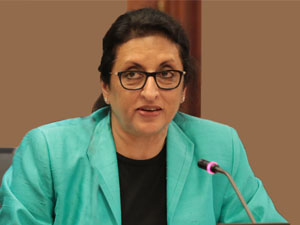Prime Minister Modi’s visit to Canada has been significant in in many ways. The first stand-alone visit by an Indian Prime Minister in over forty-two years seems to have rejuvenated a long neglected relationship. The visit generated business worth CAD $1.6 billion and saw the signing of sixteen commercial agreements between various Indian and Canadian Companies. While India and Canada have a longstanding bilateral relationship based on shared democratic values, pluralistic societies and strong people-to-people contacts, this is a partnership that has so far not realized its full capacity. It is in the interest of both nations to build upon the positive sentiments generated through this visit and maintain the momentum. Complementing 'Act East', this visit to Canada is an opportunity to push India’s 'Link West' agenda.
Economic Relations
India and Canada are industrialized democracies with considerable economic complementarities and as vibrant democracies, share politically convergent views as well. At present the bilateral trade between India and Canada, does not reflect the true potential of the commercial relationship. The two-way bilateral trade in 2013 was US$ 5.7 billion, and the two sides have reiterated their shared desire to see the bilateral trade reach $15 billion by 2015. In the Joint Statement issued on April 15, the two Prime Ministers recognized “that bilateral business and commercial linkages constitute the key drivers of the wide ranging India-Canada friendship.” The Canadian side appreciated steps taken by the current Indian Government to energize the Indian economy and policy initiatives to improve the ease of doing business in India. Specific Indian initiatives like ‘Make in India,’ ‘Affordable Housing for all by 2022,’ and ‘Smart Cities,’ are bound to offer significant commercial opportunities for collaboration between Canadian and Indian business houses and industries. The two Prime Ministers concurred to work towards the early finalization of the mutually beneficial Bilateral Foreign Investment Promotion and Protection Agreement and the Comprehensive Economic Partnership Agreement as necessary steps to expand bilateral trade between India and Canada.
Energy Cooperation
For an energy hungry India, energy security naturally ranks high in its list of priorities. Canada has surplus energy resources that India could tap. The Joint Statement noted the “significant opportunities available to expand bilateral trade and investment in energy and resources as well as related technologies and services.” Current trends in supplies and price of oil and gas make Canada an economically attractive option for meeting Indian requirements. This is a subject of growing importance in Indo-Canadian dialogue and figures increasingly in the engagement between the private sector companies of the two countries. In a Memorandum of Understanding signed between two countries in 2012, both are committed to joint efforts to develop capacities to maximize the utilization of energy resources ranging from oil and gas to new hydrocarbon resources such as oil sand and shale gas. Indian Oil Corporation is expected to make its biggest investment in Canada to secure shale-gas and liquefied natural gas for India from British Columbia province. Inherent advantages while shipping gas from Canada include short transportation time to Asia via the Pacific, lower operating costs, vast Canadian gas reserves, stable and reliable jurisdiction and a strong regulatory regime.
Civil Nuclear Cooperation
Canada had played a key role in India’s nuclear evolution by supplying uranium to India’s first nuclear reactor CIRUS in 1954. Canada as an energy superpower cooperated in developing the pressurized heavy water reactor technology with New Delhi. But India’s nuclear test in 1974, using Canadian technology, strained relations between the two nations, with allegations that India had broken the terms of the Colombo Plan. Following the signing of the historic US-India Civil Nuclear Deal in 2008, Canada has started collaborating with India once again in the nuclear domain. Canada is the second largest uranium producer in the world, with 16 per cent of the world reserves being located there. India and Canada signed the nuclear cooperation agreement in 2010 and administrative arrangements in 2013.
Being amongst the top two Uranium exporting countries in the world, Canada's potential to be a partner in India's economic transformation and to meet Indian quest for clean energy is undisputable. Against the backdrop of Ottawa’s decades-long moratorium on uranium sale to New Delhi, the recent agreement on procurement of uranium from Canada for India’s civilian nuclear power plants heralds a new era of bilateral nuclear cooperation. In PM Modi’s words, ‘this will contribute to India's efforts to power its growth with clean energy.’ This makes Canada the third country to supply uranium to India after Russia and Kazakhstan. The supplies will be under the International Atomic Energy Agency (IAEA) safeguards.
The agreement for uranium supply comes two years after protracted negotiations following the 2013 civil nuclear deal between India and Canada. In a landmark event on 15th April 2015, Canadian Prime Minister Stephen Harper and Indian Prime Minister Narendra Modi unveiled a deal worth $350-million with Canada’s largest uranium producer, Cameco Corp, which is set to supply 3,220 metric tonnes of uranium to power India’s reactors over the next five years. This agreement may pave the way for the Saskatchewan Company to further expand its collaboration with India and sell more in the years ahead as India expands its nuclear power generation.
India aims to increase its share of electricity generated by nuclear power to 25 per cent by 2050 from 4 per cent today. Hence for India, the supply of uranium is important and quoting Narendra Modi in this context, ‘For us, uranium is not just a mineral but an article of faith and an effort to save the world from climate change.’
Both the Prime Ministers have agreed to encourage a collaborative programme to leverage their industries’ respective strengths in the field of Pressurised Heavy Water Reactor (PHWR) technology for mutual benefit and energy security. They have agreed to explore mutually beneficial partnerships in the application of radio-isotopes for societal benefits and have encouraged their respective atomic energy establishments and research institutions to establish mechanisms for long-term and mutually beneficial R&D collaboration in peaceful uses of nuclear energy. The Atomic Energy Regulatory Board of India and the Canadian Nuclear Safety Commission have finalised an arrangement for regulatory cooperation in the field of nuclear and radiation safety regulation.
Some Canadian critics of the deal suggest that providing India with uranium for its nuclear power plants will free up New Delhi to use its other resources of the radioactive ore for nuclear weaponry. But India has established its credentials as a responsible nuclear power and both countries should not deny themselves this business opportunity. India adheres to international rules and has a proven track record to show that Uranium will be used for peaceful means by it.
Maritime Dimension
In the backdrop of western rebalance and ever increasing homogenization of Asia and Pacific region, maritime cooperation becomes inevitable as the oceans are a vital link in Canada’s and India’s trade with the world. Ships carry about half of Canada’s trade and more than three quarters of that of India’s. Canada has the longest coastline in the world at 243,000 km - as against 7,500 km of Indian coastline - besides large navigable waterways and many ports of call in the Atlantic, the Pacific, the Great Lakes and the Arctic. Canadian vision for providing safe, secure and environmentally responsible navigation for all vessels converges well with India’s ambition to emerge as a ‘Net Security Provider’ in the Indian Ocean Region. The geographical location and evolving geopolitical equations provides an opportunity for India and Canada to foster constructive dialogue and consultation on political and security issues of common interest and to make significant contributions to efforts toward confidence building and preventive diplomacy in the Asia-Pacific region. Both the countries are members at ASEAN Regional Forum and CSCAP (Council for Security Cooperation in the Asia Pacific), which deals with security challenges in Asia Pacific.
With diminishing U.S. Command of the Commons especially cyber, cooperation in this area to bolster Pacific Rim security is the need of hour. Canada has the expertise and well-established mechanisms in cyber security and intelligence gathering. As India and Canada face similar global threats from religious extremism, terrorism, weapons of mass destruction, according to the Joint Statement, both have decided to “further efforts to eliminate terrorist safe havens and infrastructure; dismantle terrorist networks, their support systems and financing; and stem the cross border movement of terrorists.”
Future Prospects
As India looks to extend its global foot print and move beyond the Indian Ocean to engage more actively in the Pacific region, both India and Canada can pool resources to build a stable security framework in the Asia-Pacific. Maritime security cooperation can therefore be an important driver of the India-Canada friendship. Canada also played an important role in getting a permanent observer status for India at the Arctic Council in 2013. With the Arctic gaining greater strategic prominence, collaboration between the two in that area is also poised to further increase. The Joint Statement has listed a host of initiatives for cooperation in the domains of science, technology, Innovation and Space. These are all important niche areas where the two nations share common interests. This, along with strong cultural and people to people ties, and the contribution of the Indian diaspora to both societies, creates a positive synergy in India-Canada relations.
Published Date: 29th April 2015, Image Source: http://www.pm.gc.ca










Post new comment